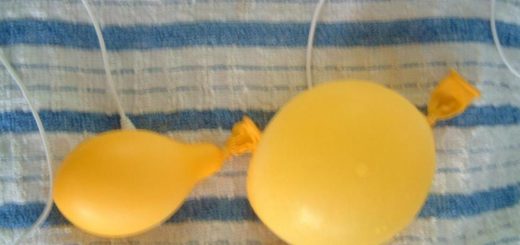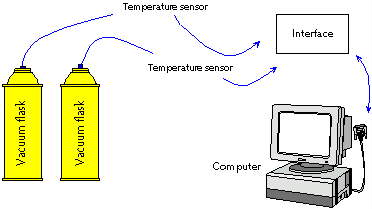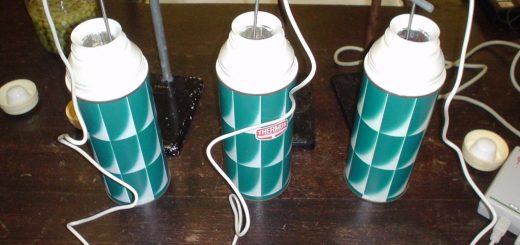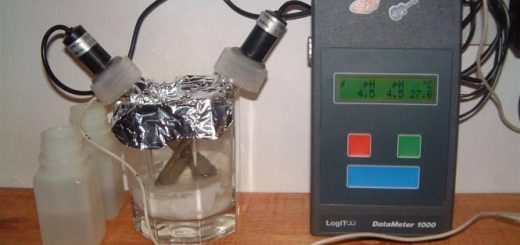Tagged: biology
stopping sound / large & small ears
visitors this year: 60 photo credit: unsplash-logoJoanna Kosinska
aerobic and anaerobic respiration
visitors this year: 188 When a living thing, such as yeast, respires it produces heat. It may do this in the presence or absence of oxygen. These processes are called aerobic respiration and anaerobic...
photosynthesis
visitors this year: 263 How are plants affected by light? During photosynthesis oxygen is produced. How much photosynthesis occurs depends on how much light there is. You can measure the amount of oxygen produced...
warm germinating seeds
visitors this year: 105 When seeds germinate they use energy and give off heat. To test this, you can use temperature sensors which will continuously monitor any heat produced. You will set up some...
when do plants grow
visitors this year: 110 It’s not easy to measure how fast a plant grows. You would probably not be too keen to take measurements every few hours – and especially not overnight. There are...
energy in food
visitors this year: 45 As food burns it releases energy. This energy can be used to heat up water. If you know how much water you used, and how hot it gets, you can...
lipase and milk fat
visitors this year: 703 Fats, such as the fats in milk, need to be digested by your body. They are broken down into fatty acids and glycerol by an enzyme called lipase. You can...
fermentation
visitors this year: 107 In the manufacture of yoghurt, bacteria turn lactose into lactic acid. The acid denatures or spoils the milk protein and sets it solid. In the process, the milk starts to...
how the pulse changes
visitors this year: 37 The speed of your pulse changes as you go about your day. It changes as you sit, walk or exercise. It is quite easy to record your pulse using the...
monitor breathing
visitors this year: 216 Is your breathing steady while you sit restfully? How does it change when you talk? How does it change when you exercise? How quickly do you recover after exercise? To...
changes in an aquarium
visitors this year: 192 Life in any aquatic habitat has to be supported by oxygen. We are all too familiar with rivers and streams where the oxygen supply has been exhausted and the river...
investigating the enzyme amylase
visitors this year: 94 Amylase catalyses the breakdown of starch into sugar. How is the activity of this enzyme affected by temperature? You can start to find out by monitoring the activity at different...
measuring visible change in liquids
visitors this year: 150 Measuring the appearance of cloudy sulfur when we mix acid and sodium thiosulfate is a popular science teaching activity. We can change the temperature or concentration of the reagents, and...
data on pupil heights and weights
visitors this year: 31 Datasets (files) like the one below are useful in science. They have data to analyse by drawing graphs. The file below is in a ‘CSV’ format. Open it in your spreadsheet...
data on breakfast cereals
visitors this year: 35 Datasets (files) like the one below are useful in science. They have data to analyse by drawing graphs. The file below is in a ‘CSV’ format. Open this one in your...
monitor fermentation in a compost heap
visitors this year: 60 Is mown grass in the compost heap really dead? When you cut the grass you remove its source of vital materials and the cut leaf ‘dies’. But when you feel...
pH data on souring milk
visitors this year: 105 The label on my milk bottle tells me how long the milk will ‘last’ at different temperatures. What do they measure to make this assessment? Is it the pH? I summoned...
why we use IT in science teaching (1994)
visitors this year: 20 Scientists need to measure and communicate, to handle information and model ideas. In essence, they need to process information. Young scientists have similar needs. When they write, draw graphs, do...
measure pulse with a sound sensor
visitors this year: 41 You can sense the human pulse cheaply using a sound sensor. While pulse sensors can now be found even in phones, using a sound sensor works too. Hold a sound...
measure lipase enzyme activity
visitors this year: 171 If you’ve a couple of pH electrodes and sensors, the following is one of the most successful enzyme measurements I’ve tried. Before bothering further, connect the pH electrodes to a...
plant transpiration using a pressure sensor
visitors this year: 124 Transpiration and a pressure sensor A sensitive barometric pressure sensor can be used to demonstrate transpiration. The picture here shows a low pressure sensor (as it was called) with a...
scientist 68: the crop scientist – Julian Little & products for farming (2014)
visitors this year: 862 A podcast about the science of food crops. The growing world population leads to a demand to farm the land several times more effectively than we used to. But growing...
Podcast: Play in new window
more: Google Podcasts | Spotify | RSS | subscribe options
scientist 66: the science journalist – report from the MRC LMB Cambridge (2014)
visitors this year: 833 Dr Chris Creese and Roger Frost tour the LMB-MRC open day exhibition and learn about body clocks and worms. Follow-up link Read more at Medical Research Council Laboratory of Molecular Biology www.mrc-lmb.cam.ac.uk
Podcast: Play in new window
more: Google Podcasts | Spotify | RSS | subscribe options
scientist 65: the cytologist – Melina Schuh oocytes and reproduction (2014)
visitors this year: 813 The topic is how we make the eggs that make our babies or in other words: meiosis in mammalian oocytes. Molecular biology research happens at the Medical Research Council lab...
Podcast: Play in new window
more: Google Podcasts | Spotify | RSS | subscribe options
scientist 64: the molecular biologist – Hugh Pelham at MRC LMB Cambridge (2014)
visitors this year: 959 The Laboratory of Molecular Biology in Cambridge is credited for landmark discoveries and cutting-edge techniques. This podcast offers an overview of what the LMB do. On the occasion of the Medical Research Council centenary,...
Podcast: Play in new window
more: Google Podcasts | Spotify | RSS | subscribe options
scientist 63: the molecular gastronomist – Peter Barham on gastronomy (2014)
visitors this year: 854 We talk with Peter Barham, a professor of ‘Molecular Gastronomy’ about what his delicious subject entails. He wrote the book “The Science of Cooking”. His idea is that “a kitchen...
Podcast: Play in new window
more: Google Podcasts | Spotify | RSS | subscribe options
scientist 62: the science writer – big questions in popular science (2013)
visitors this year: 741 The author of a riveting book called “The Big Questions in Science” explains how they researched How did life begin? Why do we dream? And when can I have a...
Podcast: Play in new window
more: Google Podcasts | Spotify | RSS | subscribe options
scientist 70: the biotechnologist – biosciences for Africa BFA (2014)
visitors this year: 770 A Cambridge project seeks to improve farming practices in Africa by sharing advances in biotechnology. They’re called Biosciences for Farming in Africa (www.b4fa.org). Chris Creese meets one of their founders Dr David...
Podcast: Play in new window
more: Google Podcasts | Spotify | RSS | subscribe options






































